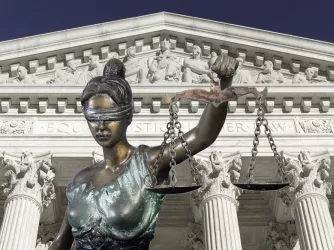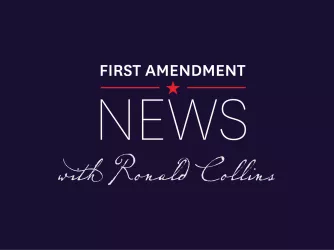Table of Contents
Student Paper Points Out Flaws in Iowa State's 'Red Light' Harassment Policies
Writing for the Iowa State Daily, Kaleb Warnock quotes FIRE Director of Speech Code Research Samantha Harris on Iowa State University’s (ISU’s) unconstitutional speech codes. Specifically, Warnock’s article draws attention to ISU’s two “red light” harassment policies, each of which prohibits a substantial amount of protected student expression.
These policies constitute a severe misapplication of peer harassment law at ISU. Indeed, it is difficult to conceive of two harassment policies at the same school that could more badly misinform students of their expressive rights.
ISU’s policy on “Discrimination and Harassment” (PDF) explicitly states, in pertinent part:
While grounded in state and federal non-discrimination laws, this policy may cover those activities which, although not severe, persistent, or pervasive enough to meet the legal definition of harassment, are inappropriate and unjustified in an educational or work environment.
[Emphasis added.]
As Warnock’s article points out, ISU’s Student Disciplinary Regulations policy on “Harassment and Discriminatory Harassment” (PDF) is also problematic:
Section 4.2.7A of the Code of Conduct states, "Engaging in First Amendment protected speech activities shall be considered acts done with a legitimate purpose."
However, it seems to contradict itself later in the same section, instead stating that whether or not it is considered harassment is purely circumstantial.
According to 4.2.7B(2), "Engaging in First Amendment protected speech activities may not rise to the level of harassment, depending on the circumstances."
Under these policies, both of which ISU students must obey, how is any student to decipher what speech is permitted and what is considered harassment at ISU? Moreover, the fact that ISU is expressly claiming, in the first policy, the right to punish as harassment student expression falling short of the legal standard for harassment is very troubling. If I were a student at ISU, I would not quite know what to make of my speech rights at the university.
Not only does Warnock’s article recognize the problems with these provisions, but ISU administrator Keith Bystrom himself acknowledges the point:
However, [Bystrom] did acknowledge that the policy could potentially violate free-speech laws in the right circumstance.
"It may be possible," Bystrom said. "We do take the First Amendment and free-speech rights of individuals very seriously and we're constantly answering questions and allowing people to speak on campus — and do things on campus that others complain about."
ISU needs to erase the confusion created by its harassment policies and, taking a cue from FIRE President Greg Lukianoff’s recent op-ed in The Washington Post, adopt the Supreme Court’s controlling standard for peer harassment: discriminatory conduct, directed at an individual, that is “so severe, pervasive, and objectively offensive” that “victim-students are effectively denied equal access to an institution’s resources and opportunities.”
If it instead holds on to its current policies, the confusion over students’ expressive rights will linger. Since the university has explicitly reserved for itself the right to punish speech protected by the First Amendment, students cannot possibly know what is and is not permitted, leading to a chilling effect on student speech. As a public university, and as a university that claims to value free speech, Iowa State University has both a legal and a moral obligation to uphold its students’ First Amendment rights, and its policies fail to do so.
Recent Articles
FIRE’s award-winning Newsdesk covers the free speech news you need to stay informed.

LAWSUIT: Videographers sue to overturn National Parks Service arbitrary permit scheme

Supreme Court must halt unprecedented TikTok ban to allow review, FIRE argues in new brief to high court

Australia blocks social media for teens while UK mulls blasphemy ban
